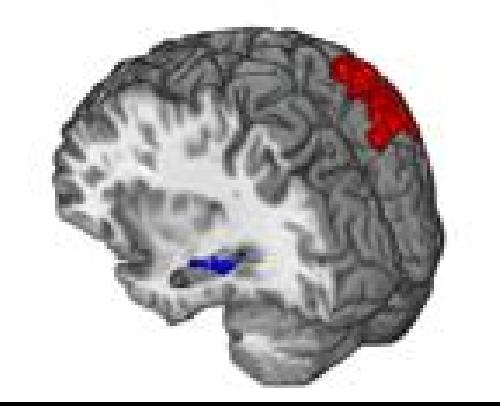Fifteen years ago, a study showed that the brains of London cab drivers had an enlargement in the hippocampus, a brain area associated with navigation. But questions remained: Did the experience of navigating London's complex system of streets change their brains, or did only the people with larger hippocampi succeed in becoming cab drivers?
Now, Carnegie Mellon University scientists have determined that learning detailed navigation information causes the hippocampal brain changes. Published in NeuroImage, Tim Keller and Marcel Just show that brief navigation training changes a person's brain tissue and improves how that changed tissue communicates with other brain areas involved with navigation. The findings establish a critical link between structural and functional brain alterations that happen during spatial learning. They also illustrate that the changes are related to how neural activity synchronizes - or communicates - between the hippocampus and other regions that are important for navigation understanding and learning.
"The hippocampus has long been known to be involved in spatial learning, but only recently has it been possible to measure changes in human brain tissues as synapses become modified during learning," said Keller, a senior research scientist in CMU's Department of Psychology and Center for Cognitive Brain Imaging (CCBI). "Our findings provide a better understanding of what causes the hippocampal changes and how they are related to communication across a network of areas involved in learning and representing cognitive maps of the world around us."

To examine how the hippocampus changes, Keller and Just recruited 28 young adults with little experience playing action video games. For 45 minutes, the participants played a driving simulation game. One group practiced maneuvering along the same route 20 times. The control group drove for the same amount of time, but along 20 different routes. Before and after each training session, each participant's brain was scanned using diffusion-weighted imaging (DWI), which measures water molecule movement in the brain, and functional magnetic resonance imaging (fMRI), which analyzes brain activity.
The researchers found that the group that practiced the same route over and over -- the spatial learning group -- increased their speed at completing the driving task more than the group practicing on different routes, indicating that they learned something specific about the spatial layout of the virtual environment. The spatial learning group also improved their ability to order a sequence of random pictures taken along the route and to draw a 2-D map representing the route.
Importantly, only the spatial learning group showed brain structural changes in a key spatial learning part of the hippocampus, the left posterior dentate gyrus. There also were increases in the synchronization of activity - or functional connectivity - between this region and other cortical areas in the network of brain regions responsible for spatial cognition. And, the amount of the structural change was directly related to the amount of behavioral improvement each person showed on the task.
"The new discovery is that microscopic changes in the hippocampus are accompanied by rapid changes in the way the structure communicates with the rest of the brain," said Just, the D.O. Hebb University Professor of Psychology in the Dietrich College of Humanities and Social Sciences and director of the CCBI. "We're excited that these results show what re-wiring as a result of learning might refer to. We now know, at least for this type of spatial learning, which area changes its structure and how it changes its communication with the rest of the brain."
This is not the first brain research breakthrough to happen at Carnegie Mellon. CMU is the birthplace of artificial intelligence and cognitive psychology and has been a leader in the study of brain and behavior for more than 50 years. University researchers have performed some of the first mind-reading studies using fMRI, they created some of the first cognitive tutors, helped to develop the Jeopardy-winning Watson, founded a groundbreaking doctoral program in neural computation, and completed cutting-edge work in understanding the biological basis of autism. Building on its strengths in biology, computer science, psychology, statistics and engineering, CMU launched BrainHub, an initiative that focuses on how the structure and activity of the brain give rise to complex behaviors.




Comments